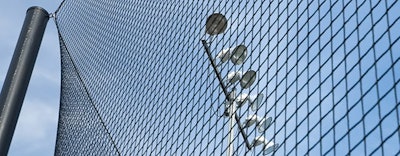
Those attending a baseball game know that with every swing of the bat there is a chance that the ball might be hit in their direction. During games that typically last hours, fans may not watch every pitch or be prepared to catch or otherwise protect themselves from a ball that leaves the field of play. As a result, foul balls entering the stands can be dangerous, particularly when young children are involved.
To protect team owners and operators from the potential flood of lawsuits by spectators who are injured by foul balls, courts have developed the "Baseball Rule" defense. Under the Baseball Rule, owners and operators are considered to have satisfied their legal duty to spectators when they offer a reasonable number of seats protected by screens or netting. Importantly, facilities are not required to provide protected seats for everyone who wants them. Under the rule, it is enough to just provide screened seats where the danger is greatest.
But what's the duty of care for clubs whose stadiums feature a specialized spectator area where socializing may take precedent for fans over paying strict attention to the action on the field? A good example of the Baseball Rule's broad reach is Mills v. Durham Bulls Baseball Club, Inc., 854 S.E.2d 126 (N.C. App. 2020).
Night at the park no picnic
Eleven-year-old Angelina DeBlasio and her family had just relocated to North Carolina for her father's job. To celebrate the move and introduce the family to the father's new coworkers, the company reserved the Bull Pen Picnic Area for a meet-and-greet at Durham Bulls Athletic Park during a Durham Bulls baseball game.
The picnic area is an open-air section outside the left-field foul line that places patrons at one of the stadium's farthest spots from home plate. Located at about field level and separated from the area of play only by a low wall, the picnic area sits well beyond the 110 feet of protective netting that runs from behind home plate toward each team's dugout. The portion of the picnic area closest to the field includes picnic tables with umbrellas, while the area farthest from the field is open space. Three warning signs are posted along the picnic area's field wall, each stating, "PLEASE BE AWARE OF OBJECTS LEAVING THE PLAYING FIELD." Prior to each game, the Durham Bulls play an announcement over the public address system warning visitors that baseballs may "come flying at ya at a high rate of speed, so please stay alert while you're in the seating bowl."
DeBlasio and her family arrived at the ballpark around 6:15 p.m. and learned for the first time that they would be sitting in the picnic area. DeBlasio did not pay full attention to the game once it started, later testifying that she only saw a little bit of the game. Instead, DeBlasio spent most of her time talking to her parents, occasionally getting food from the buffet at the back of the picnic area. DeBlasio's father paid closer attention to the game and saw three or four foul balls enter the stands during play. Neither he nor his daughter heard the public announcement about errant balls, nor did they see any of the signs warning attendees about objects leaving the field.
During the game, as DeBlasio was seated on a bench facing the field and talking to her mother, a foul ball exited the field of play, entered the picnic area and struck the child's face. She was taken from the stadium to the hospital, where she underwent endodontic and orthodontic surgery. As a result of the incident, William Mills, as guardian ad litem (a court-appointed steward serving children in court cases) for DeBlasio, filed suit against the Durham Bulls alleging negligence. In defense, the Durham Bulls claimed that under the Baseball Rule they could not be negligent as a matter of law. The trial court agreed with the Durham Bulls and dismissed the case.
Five-tool defense
On appeal, Mills claimed that the Baseball Rule should not apply for five reasons: 1) DeBlasio lacked sufficient knowledge of the game of baseball to understand that foul balls could be hit into the stands and cause injury to unprotected spectators; 2) DeBlasio did not have a choice between sitting in the picnic area and the stadium's screened seats; 3) DeBlasio was not, in fact, a spectator, as she considered herself to be attending a company picnic rather than a baseball game; 4) the picnic area was negligently designed and that negligent design caused DeBlasio's injury; and 5) the Baseball Rule, established in 1913 at a time when baseball was central to and synonymous with American popular culture and sport, should be abandoned as outdated.
In rejecting Mills' first argument — that since DeBlasio was only 11 at the time of the incident, she lacked full knowledge of the danger posed by thrown or batted balls — the court held that DeBlasio had previously attended multiple baseball games, watched games on TV and played softball for several years prior to attending the Durham Bulls game. Therefore, the court determined DeBlasio had adequate knowledge of the game to be aware of the danger of balls fouled into the stands, even if she had never witnessed such an event herself.
As for Mills' second argument, that DeBlasio did not have a choice of seats, the court held that the choice part of the Baseball Rule is on the part of the spectator to attend a baseball game in an unprotected seat when the ballpark operator has offered a reasonable number of protected seats. Therefore, even though DeBlasio and her family learned that they would not be seated in a protected area of the stadium only upon arriving at the game, knowing the danger of foul balls, they nonetheless still chose to stay and sit in an unprotected area. The Baseball Rule, the court held, precludes recovery for spectators who make such a choice.
Mills' third argument was that DeBlasio was not an actual spectator because she was at the stadium attending a company picnic. Even though DeBlasio may have had no plans to watch the game and considered herself to be attending a picnic, the court found that the Baseball Rule still applied. DeBlasio clearly knew she was at a baseball stadium, that a baseball game was being played while she was in the picnic area, and she had even watched "a little bit" of the game. For those reasons, the court concluded DeBlasio was a spectator within the meaning of the Baseball Rule.
Mills' fourth argument was that the Baseball Rule did not apply because the Durham Bulls negligently designed the picnic area, and those negligent design elements were the proximate cause of her injury. Specifically, Mills claimed that the negligent design of the picnic area distracts patrons from the game by dangerously beckoning them to turn their backs to the game and giving spectators a false sense of security in thinking that the picnic area was safe and insulated from baseball's inherent risks. In rejecting this argument, the court found that DeBlasio was sitting at a picnic table with clear views of home plate at the time she was struck by a foul ball. In addition, there was no evidence to suggest that the foul ball that hit her was obscured by an umbrella or player from the opposing team, or that any of the complained-of design flaws directly led to DeBlasio's injuries. Therefore, the court held the Baseball Rule applies to this case.
As for Mills' final argument, that the Baseball Rule should be abandoned because it is outdated, the court held that since the Baseball Rule had been adopted by the North Carolina Supreme Court, this lower court did not have the legal authority to set it aside in this case.
![The plaintiff claimed the Bull Pen Picnic Area was deficient in its design, thus subjecting patrons to the dangers of foul balls. [Photo courtesy of all-things-ed.com]](https://img.athleticbusiness.com/files/base/abmedia/all/image/2021/04/ab.legal621a.png?auto=format%2Ccompress&fit=max&q=70&w=400) The plaintiff claimed the Bull Pen Picnic Area was deficient in its design, thus subjecting patrons to the dangers of foul balls. [Photo courtesy of all-things-ed.com]
The plaintiff claimed the Bull Pen Picnic Area was deficient in its design, thus subjecting patrons to the dangers of foul balls. [Photo courtesy of all-things-ed.com]
Eye on the ball
While the court ruled that DeBlasio undoubtedly suffered a painful and unfortunate injury, the Durham Bulls had fulfilled their duty under the law. However, even though the Mills court upheld the Baseball Rule, there are some lessons that facility owners and operators can still learn from the case.
First, the Baseball Rule is not the law in every state, and in those states that have adopted it, its specific language differs from state to state. Therefore, owners and operators need to closely inspect state laws and statutes when defending cases brought on by foul ball injuries.
Second, the Baseball Rule is an assumption-of-risk defense. As such, it is important to note that the assumption of risk generally does not apply to minors. Therefore, when young children are injured by foul balls, the first consideration for the court will be the age of the child. The younger the person, the less likely they are to have the sufficient knowledge of risk necessary to understand the danger of foul balls hit into the stands.
Finally, as more baseball parks add picnic and other specialty locations that encourage patron socializing, it is important that architects and facility owners keep in mind that there are exceptions to the Baseball Rule. As noted in the Mills case, if the picnic or specialty location creates distractions, blind spots or obscure lines of sight, the team owners and stadium operators can be found negligent for injuries incurred by foul balls entering these areas.
Attorney John Wolohan is a professor of sports law in the David B. Falk College for Sport and Human Dynamics at Syracuse University, where Cameron Mitchell is a recent graduate from the Senior Sport Analytics program.
This article originally appeared in the June 2021 issue of Athletic Business with the title "Baseball Rule reaches picnic area in foul ball case." Athletic Business is a free magazine for professionals in the athletic, fitness and recreation industry. Click here to subscribe.
































